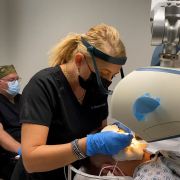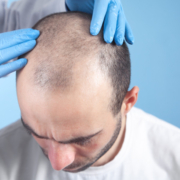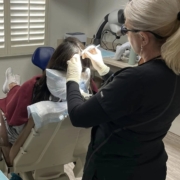Hair Transplant Comparison with Hair Replacement and Hair Implantation
When it comes to addressing hair loss, the array of options available can be overwhelming. Among the most discussed solutions are hair transplants, hair replacement systems, and hair implantation techniques. Each approach offers unique benefits and considerations. In this comprehensive guide, we’ll explore these options in detail, helping you make an informed decision on your hair restoration journey.
Hair Transplant
- What It Is: Hair transplantation is a surgical method that involves transferring hair follicles from a donor site (usually the back or sides of the head where hair is more abundant) to the balding or thinning areas of the scalp. This process aims to restore the hair in areas where it has thinned or disappeared.
- Benefits:
Permanent and Natural-Looking Solution: One of the most significant advantages of hair transplants is their ability to produce results that blend seamlessly with your natural hair, growing, and aging in the same way as the rest of your locks.
- Considerations:
-
- Surgical Procedure Required: Undergoing a hair transplant means you’ll need to prepare for a surgical process, which includes a recovery period and the potential for side effects such as swelling and discomfort.
- Recovery Time: Post-surgery, some downtime is needed for the scalp to heal properly, which might involve taking a break from certain activities and following a specific care routine.
Hair Replacement Systems
- What It Is: This category includes wigs and toupees, which can be made from synthetic materials or real human hair, offering an aesthetic solution to hair loss without the need for surgery.
- Benefits:
-
-
- Immediate Results: Unlike surgical options, hair replacement systems offer an instant change, allowing for an immediate improvement in appearance.
- Non-invasive: With no surgery required, this option eliminates the risks associated with surgical procedures, such as infection or scarring.
-
- Considerations:
-
- Regular Maintenance: To maintain the appearance and longevity of hair replacement systems, regular cleaning and adjustments are necessary.
- Temporary Solution: Unlike hair transplants, these systems do not offer a permanent fix and will need to be replaced or maintained over time.
Hair Implantation (Hair Implants)
- What It Is: Hair implantation can refer to two distinct approaches: the surgical implantation of hair, akin to traditional hair transplants, and the use of artificial hair fibers that are inserted into the scalp.
- Benefits:
-
-
- Denser Look: Both methods aim to provide a fuller appearance to thinning areas, with artificial fibers offering immediate density.
- Non-Surgical Options: For those wary of surgery, artificial hair fibers present an alternative that doesn’t require invasive procedures.
-
- Considerations:
-
- Risk of Rejection and Infection: Particularly with artificial fibers, there’s a risk that the body may reject the material, or it could lead to scalp infections.
- Natural Appearance: There’s a possibility that artificial implants may not mimic the look and feel of your natural hair as closely as other options.
Delving Deeper
1. Procedure and Technique
| Category | Procedure/Technique | Description |
| Hair Transplant | Follicular Unit Extraction (FUE) | Individual follicles are extracted and transplanted. Minimally invasive with less downtime. |
| Follicular Unit Transplantation (FUT) | A strip of skin with hair is removed, and follicles are transplanted. More invasive but efficient for large areas. | |
| Hair Replacement Systems | Custom Fit and Style | Custom-fitted and styled to match your natural hair. |
| Attachment Methods | Attached using adhesive, clips, or weaving, requiring regular adjustments. | |
| Hair Implantation | Surgical Implantation | Surgical options mimic traditional hair transplants. |
| Artificial Fiber Implantation | Artificial fibers are implanted into the scalp one by one. |
2. Look and Feel
| Feature | Hair Transplant | Hair Replacement Systems | Hair Implantation |
| Natural Appearance | Grows like normal hair, allowing for haircuts, styling, and natural aging. | None | Artificial Implants: May lack the completely natural look and feel of biological hair. |
| Texture and Color Matching | Uses your own hair, ensuring a perfect match. | None | Surgical Implants: Uses your own hair, ensuring results are natural. |
| Versatility in Styles | None | Wide range of colors, textures, and styles. | None |
| Feel | None | May not feel exactly like natural hair but advancements have made them more realistic. | None |
3. Durability and Maintenance
| Treatment Option | Feature | Description |
| Hair Transplant | Long-Term Solution | Permanent results that will last a lifetime with proper care |
| Maintenance | Follow post-op care initially; regular hair care suffices | |
| Hair Replacement Systems | Lifespan | Can last several months to a year with proper care |
| Maintenance | Requires regular cleaning, attachment, and potential replacement | |
| Hair Implantation | Artificial Fibers | May need replacements and adjustments over time |
| Surgical Implants | Similar to hair transplants in terms of durability |
4. Cost and Accessibility
| Treatment Option | Cost Considerations | Accessibility Considerations |
| Hair Transplant | Higher upfront cost but considered an investment due to its permanence. | Requires a qualified surgeon and clinic. |
| Hair Replacement Systems | Lower initial cost compared to surgical options. | Widely available and customizable. |
| Hair Implantation | Variable Costs: Depending on the type (artificial vs. surgical), costs can vary widely. | Specialist Required: Particularly for surgical options, a qualified professional is necessary. |
5. Risks and Considerations
| Treatment Option | Risks and Considerations | Recovery or Maintenance |
| Hair Transplant | – Infection
– Scarring – Potential for unnatural-looking results if not done properly |
Short-term recovery with possible discomfort |
| Hair Replacement Systems | – Risk of allergic reactions to adhesives or materials | May affect lifestyle activities like swimming or high-intensity sports |
| Hair Implantation | – Rejection and Infection (especially with artificial fibers)
– Risk of looking less natural |
Depends on the type of implantation; maintenance may vary for artificial fibers |
Making the Right Choice in Hair Restoration
When facing hair loss, selecting the best treatment method can feel daunting. The journey towards hair restoration is not just about choosing a procedure; it’s about making a lifestyle choice that aligns with your personal needs, expectations, and long-term well-being. Here, we delve deeper into how to make the right choice for your hair restoration needs, emphasizing the importance of professional guidance, lifestyle considerations, and the long-term outlook.
Consult with Professionals
- Expert Evaluation: Begin by consulting with experienced surgeons or hair loss specialists who can provide a thorough evaluation of your hair loss. This step is crucial as it helps determine the most effective treatment method based on the cause and pattern of your hair loss, your scalp’s condition, and your overall health.
- Tailored Recommendations: Each individual’s hair loss situation is unique, and a professional can offer personalized recommendations. They can outline the pros and cons of each treatment option, helping you understand what to expect in terms of results, maintenance, and costs.
- Quality of Care: Seeking advice from reputable professionals ensures you receive the highest standard of care. It also minimizes the risks associated with treatments, whether you opt for a surgical procedure like hair transplants or a non-surgical solution like hair replacement systems.
Consider Your Lifestyle
- Daily Activities and Maintenance: Your daily routine and willingness to maintain the hair restoration solution play a significant role in your decision-making process. For instance, if you lead an active lifestyle and engage in water sports or high-intensity activities, a non-surgical hair replacement system may require frequent adjustments and care, which could be inconvenient.
- Appearance and Confidence: Consider how each option aligns with your desired appearance and its impact on your confidence. While hair transplants offer a permanent, natural look, you may prefer the versatility of hair replacement systems, which allow for different styles and immediate results.
- Time and Commitment: Evaluate how much time you are willing to dedicate to the maintenance and care of the chosen solution. Hair transplants, for example, have a one-time surgery followed by a recovery period, but the results are long-lasting with minimal maintenance. On the other hand, hair replacement systems require ongoing care and regular visits to a specialist for adjustments.
Think Long-Term
- Durability and Changes Over Time: Assess the longevity of the hair restoration option. A hair transplant, while initially more costly, provides a permanent solution that ages with you. Conversely, hair replacement systems and hair implants may require future updates or replacements, adding to the long-term cost and effort.
- Health and Safety: Long-term health implications and safety should be a priority. Surgical options carry risks such as scarring and infection, but choosing a skilled surgeon can minimize these risks. For non-surgical options, consider potential allergies or reactions to materials used in hair systems.
- Evolving Hair Loss: Recognize that hair loss might continue to evolve over time. A comprehensive approach, sometimes combining treatments like hair transplants with medical therapies, may offer the most sustainable outcome. Discuss with your specialist how to address future changes in your hair loss pattern.
Conclusion
In conclusion, while hair transplants offer a permanent, natural solution, they require surgery and recovery time. Hair replacement systems provide immediate results with ongoing maintenance, and hair implantation offers a middle ground with both surgical and non-surgical options. Your decision should be based on a careful consideration of your needs, lifestyle, and the advice of professionals in the field.












